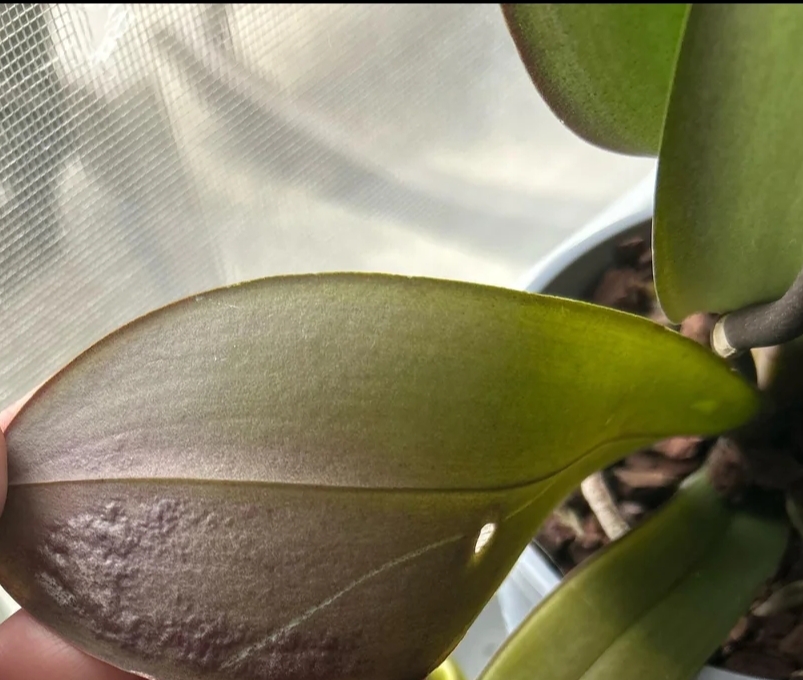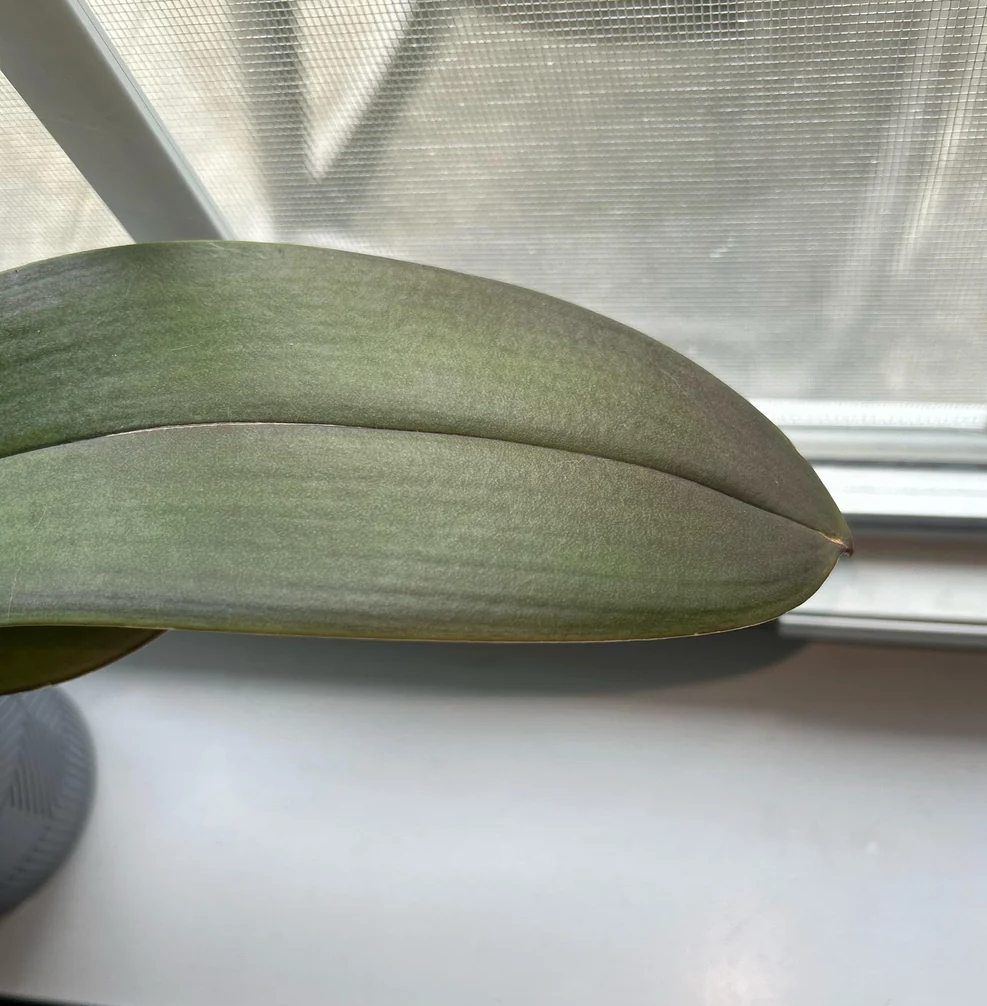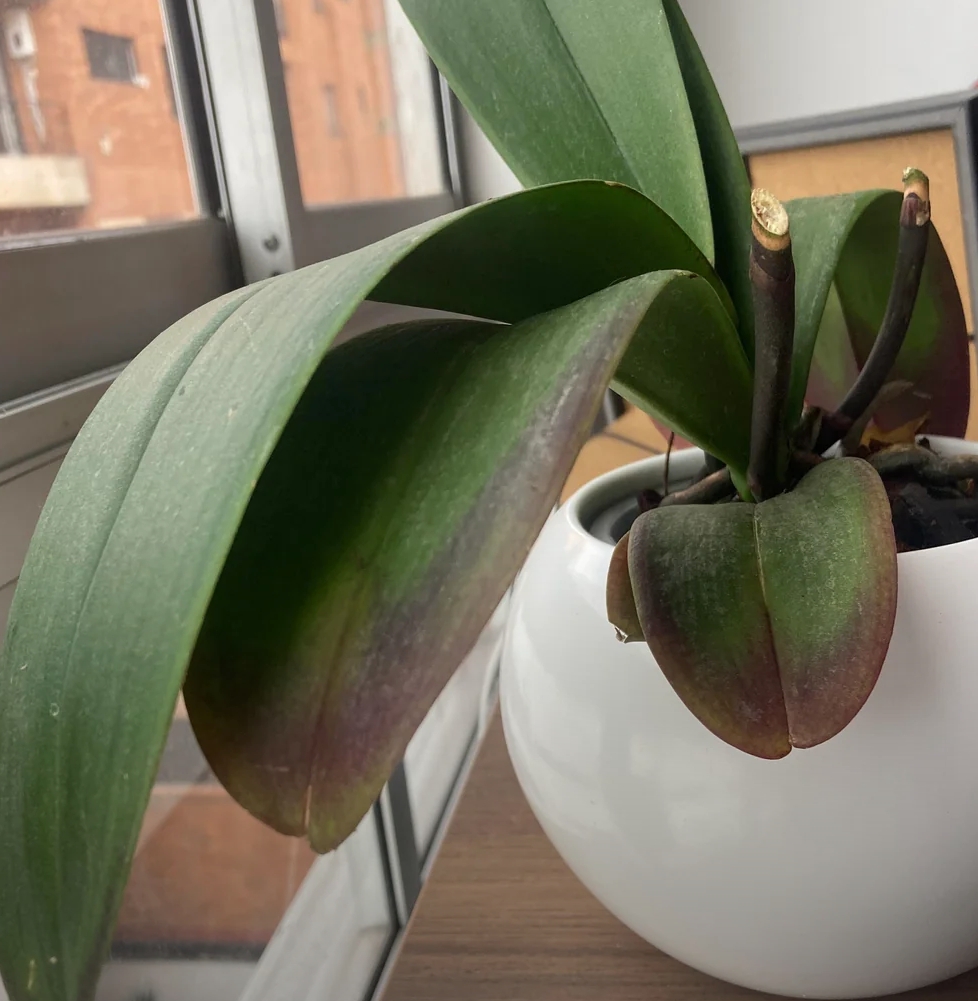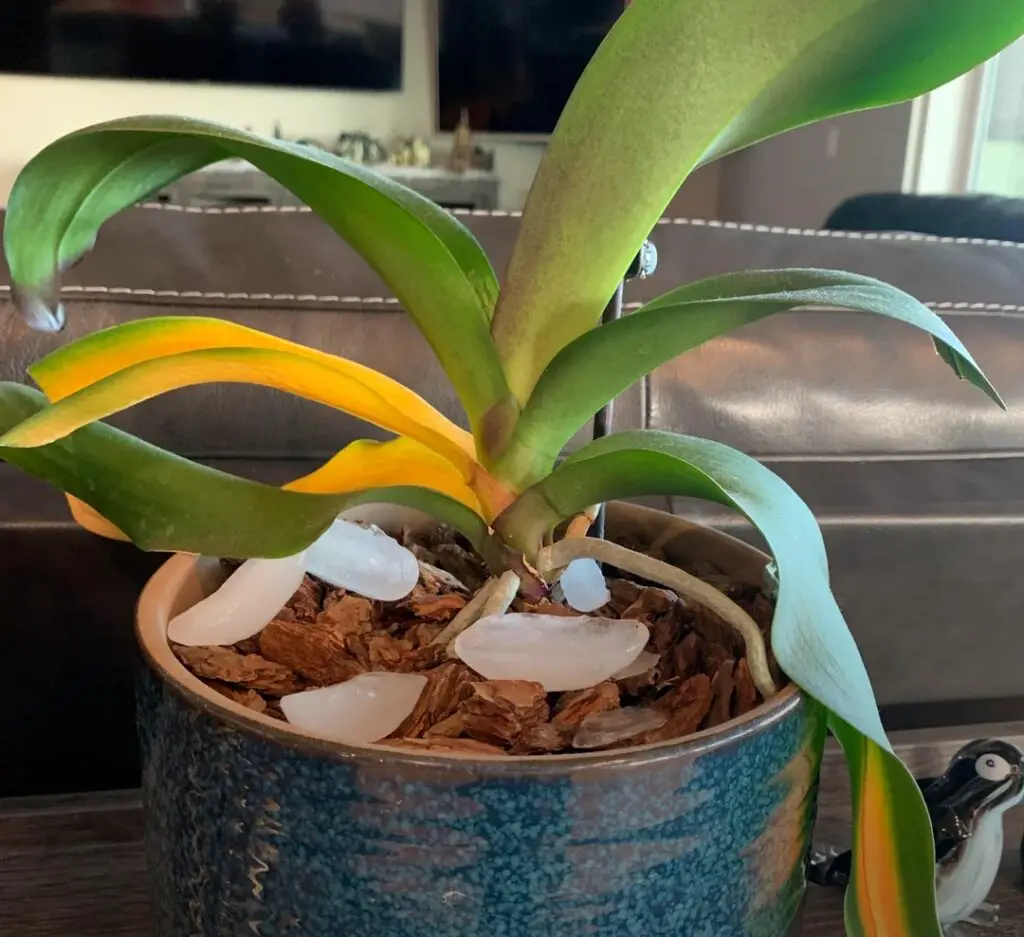- 1 1. Too Much Sunlight Exposure
- 2 2. Temperature Fluctuations
- 3 3. Nutrient Deficiency (Especially Phosphorus)
- 4 4. Overwatering or Poor Drainage
- 5 5. Fungal or Bacterial Infections
- 6 6. Stress Due to Repotting
- 7 7. Pests (Spider Mites & Aphids)
- 8 8. Excessive Fertilization
- 9 9. Genetic Factors
- 10 10. Aging Leaves
- 11 FAQS
Orchids are one of the most beloved houseplants, admired for their delicate beauty and exotic flowers. However, when you notice orchid leaves turning red, it can be concerning. This color change is often a sign of underlying issues that need attention. From environmental stressors to nutritional imbalances, various factors can cause this problem.
In this guide, we’ll explore the 10 most common reasons why orchid leaves turn red and provide practical solutions to restore their health.You may avoid damage and promote the growth of your orchid by being aware of these problems.

1. Too Much Sunlight Exposure
Orchids are tropical plants that prefer indirect sunlight. If they receive excessive direct sunlight, their leaves can develop a reddish hue as a defense mechanism. The red pigmentation, caused by anthocyanins, helps protect the leaves from sunburn. Prolonged exposure, however, may cause irreversible harm.

Fix:
Move your orchid to a spot with bright, indirect light (such as near an east-facing window).
To soften bright sunlight, use a sheer curtain.
If growing outdoors, place orchids under partial shade to prevent sun stress.
Tip: If you notice red patches along with dry, crispy areas, it’s a sign of sunburn. Trim damaged leaves and adjust the light exposure immediately.
Timeframe for Recovery: 2–3 weeks (if caught early)
2. Temperature Fluctuations
Orchids are sensitive to sudden temperature changes. If they experience drastic shifts in temperature—such as moving from a warm room to a cold draft—their leaves may turn red. Cold stress, in particular, reduces chlorophyll production, making red pigments more visible.
Fix:
Keep your orchid in a stable environment with temperatures between 65–75°F (18–24°C) during the day and 55–65°F (13–18°C) at night.
Avoid placing orchids near open windows, air conditioners, or heating vents.
Tip: Use a digital thermometer to monitor temperature fluctuations in your home.
Timeframe for Recovery: 2–4 weeks (depending on the extent of stress)
3. Nutrient Deficiency (Especially Phosphorus)
A lack of essential nutrients, particularly phosphorus, can cause orchid leaves to turn red .Phosphorus is essential for root development and energy transport. If your orchid lacks this nutrient, the leaves may turn reddish-purple.
Fix:
Throughout the growing season, use a balanced orchid fertiliser (20-20-20) every two weeks.
If phosphorus deficiency is severe, switch to a bloom booster fertilizer (10-30-20) to provide extra phosphorus.
Ensure proper watering so nutrients can be absorbed efficiently.
Tip: To prevent burning the roots, fertiliser should always be diluted to half strength.
Timeframe for Recovery: 3–6 weeks (improvements should be noticeable after a few feedings)
4. Overwatering or Poor Drainage
Orchids require well-draining media to prevent waterlogged roots. If the roots remain wet for too long, they become deprived of oxygen, leading to stress and orchid leaves turning red.
Fix:
Ensure your orchid pot has drainage holes to allow excess water to escape.
Make use of a well-aerated orchid mix (perlite, bark, or sphagnum moss).
Before watering again, let the top inch of the medium dry out.
Tip: If root rot has set in, trim affected roots and repot your orchid in fresh media.
Timeframe for Recovery: 4–8 weeks (depending on root health)
5. Fungal or Bacterial Infections
Orchids are prone to fungal and bacterial infections, which can cause reddish spots or streaks on their leaves. These infections often occur due to high humidity, poor air circulation, or excessive moisture on leaves.
Fix:
Isolate the affected orchid to prevent spreading.
Trim infected leaves using sterile scissors.
Apply a fungicide (copper-based) or bactericide to affected areas.
Improve air circulation by using a small fan near your plants.
Tip: Water your orchid at the base rather than on the leaves to reduce the risk of infection.
Timeframe for Recovery: 2–5 weeks (depending on severity)
6. Stress Due to Repotting
If you’ve recently repotted your orchid, it may experience transplant shock. This can lead to temporary red discoloration in the leaves as the plant adjusts to its new environment.
Fix:
Minimize handling during repotting to reduce stress.
Use a fresh orchid mix to promote healthy root growth.
Water the plant regularly and keep it in indirect light.
Tip: Repotting during bloom season should be avoided as it may result in flowers dropping.
Timeframe for Recovery: 3–4 weeks (orchid should stabilize with proper care)
7. Pests (Spider Mites & Aphids)
Pests such as spider mites, aphids, and mealybugs can damage orchid leaves, causing them to turn red.These insects cause stress and discolouration by sucking sap from the foliage.
Fix:
Inspect the plant for pests, especially on the undersides of leaves.
Wipe leaves with a mild soap solution or neem oil.
Use beneficial insects, like as ladybirds, to naturally manage aphids.
Tip: Regularly misting your orchids can deter spider mites, as they thrive in dry conditions.
Timeframe for Recovery: 1–3 weeks (if pests are eliminated quickly)
8. Excessive Fertilization
Too much fertilizer can lead to nutrient imbalances, causing orchid leaves to turn red. Over-fertilization often results in salt buildup, which can damage roots and affect leaf pigmentation.
Fix:
Reduce fertilizer applications to once every 2–4 weeks.
Flush the pot with clean water every month to remove excess salts.
Tip: Use a specialized orchid fertilizer rather than a general-purpose plant food.
Timeframe for Recovery: 3–6 weeks (depending on the level of salt buildup)
9. Genetic Factors
Some orchid varieties naturally develop red pigmentation in their leaves, especially under bright light. This is not a cause for concern, as it is a part of their genetic makeup.
Fix:
- If the plant appears otherwise healthy, no action is needed.
- Continue providing optimal light and care to encourage normal growth.
Tip: Research your orchid variety to see if red leaves are a natural characteristic.
Timeframe for Recovery: N/A (permanent trait in some species)
10. Aging Leaves
As orchids grow, older leaves naturally turn yellow, red, or brown before dropping off. This is a typical stage in the life cycle of the plant.
Fix:
If only one or two lower leaves are turning red, let them fall off naturally.
Avoid pulling off leaves forcefully, as this can damage the plant.
Tip: Ensure proper nutrition and light to support new leaf growth.
Timeframe for Recovery: Ongoing (depends on the plant’s natural aging process)
Final Thoughts
When you notice orchid leaves turning red, identifying the cause is crucial. Whether it’s due to excessive sunlight, temperature stress, or nutrient deficiencies, there are simple solutions to restore your plant’s health. By providing the right care—proper lighting, consistent temperatures, and balanced feeding—you can keep your orchid thriving for years.
If you’re struggling with persistent red leaves, take action today using the solutions above. With patience and the right approach, your orchid will recover and flourish beautifully
FAQS
Why are my orchid leaves turning red?
Orchid leaves turning red can be caused by excessive sunlight, nutrient deficiencies, temperature stress, or fungal infections.Finding the source will assist you in resolving the problem.
Is it normal for orchid leaves to turn red?
No, orchid leaves turning red is usually a sign of stress. While some orchids, like certain Phalaenopsis hybrids, may develop reddish hues in bright light, persistent redness indicates a problem.
Can too much sunlight cause orchid leaves to turn red?
Yes, excessive sunlight is one of the main reasons for orchid leaves turning red. If your orchid gets direct sun for long periods, move it to a shadier spot to prevent leaf damage
How do I stop orchid leaves from turning red due to too much light?
If orchid leaves are turning red due to excess light, relocate the plant to a bright but indirect light area. Using sheer curtains or shade cloth can help filter the sunlight.
Does cold weather cause orchid leaves to turn red?
Yes, temperature stress can lead to orchid leaves turning red. Sudden drops in temperature or exposure to cold drafts can trigger redness in orchid foliage.
What nutrient deficiency causes orchid leaves to turn red?
A lack of phosphorus is a common reason for orchid leaves turning red. Using a balanced orchid fertilizer with adequate phosphorus can prevent this issue.
Can overwatering lead to orchid leaves turning red?
Not directly, but overwatering can cause root rot, leading to stress and nutrient uptake problems, which may result in orchid leaves turning red over time.
Are certain orchid species more prone to leaves turning red?
Yes, some orchids, like Vanda and Dendrobium, may show orchid leaves turning red in bright light conditions. However, excessive redness still indicates stress.
How do I fix orchid leaves turning red due to a fungal infection?
If orchid leaves are turning red due to a fungal infection, remove the affected leaves, improve airflow, and apply a fungicide to prevent further spread.
Can improper fertilization cause orchid leaves to turn red?
Yes, too much or too little fertilizer can result in orchid leaves turning red. Using the right orchid fertilizer in appropriate amounts can prevent nutrient imbalances.
Should I be concerned if only one orchid leaf is turning red?
If just one orchid leaf is turning red, it may be aging and naturally shedding. However, if multiple leaves show redness, investigate possible stress factors.
Can repotting stress cause orchid leaves to turn red?
Yes, repotting stress can sometimes lead to orchid leaves turning red. Ensuring proper care after repotting, like stable humidity and watering, can reduce stress.
Do red orchid leaves mean my plant is dying?
Not necessarily. While orchid leaves turning red signals stress, addressing the underlying issue can help restore your orchid’s health.
How do I prevent orchid leaves from turning red?
To prevent orchid leaves turning red, provide balanced light, proper watering, correct fertilization, and maintain stable temperatures. Avoid extreme conditions.
Should I remove orchid leaves that are turning red?
If orchid leaves are turning red due to disease, remove them to prevent further spread. If the redness is from stress, fixing the cause can restore the leaf color.




